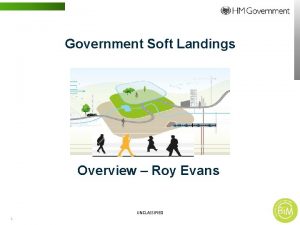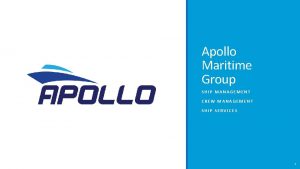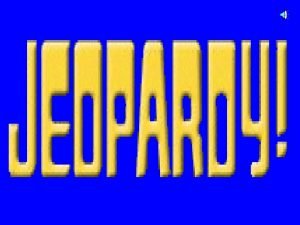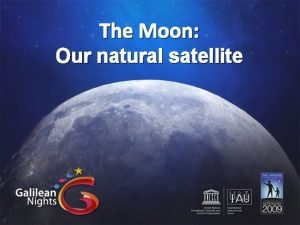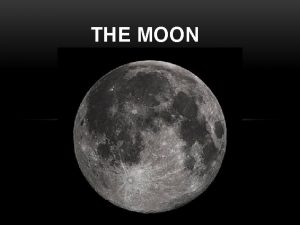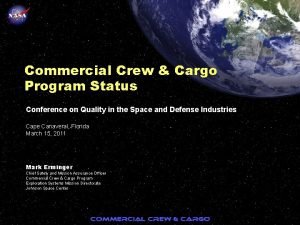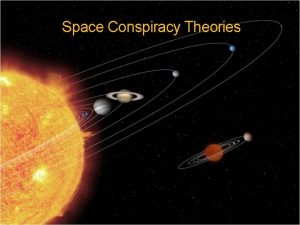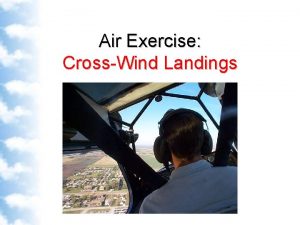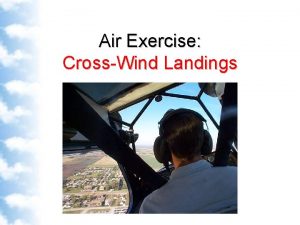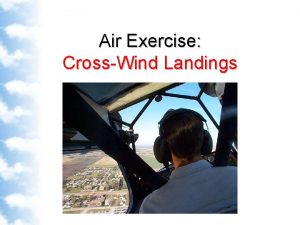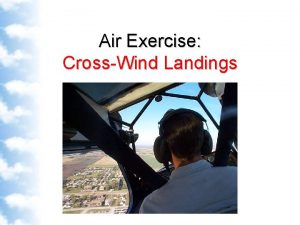Apollo 11 And The Moon Landings The Crew








- Slides: 8

Apollo 11 And The Moon Landings

The Crew The Apollo 11 crew from left to right: Neil Armstrong, Commander; Michael Collins, command module pilot; and , Edwin E. Aldrin Jr. (Buzz Aldrin), lunar module pilot.

The Launch In President Kennedy's speech to Congress, on May 25, 1961, he expressed a concern that the United States was falling behind the Soviet Union in technology and prestige. He challenged the nation to put a man on the moon before the end of the decade. On July 16, 1969, the Apollo 11 launched from the Kennedy Space Centre.

The Moon Landing On July 20, 1969, Commander Neil Armstrong became the first man on the moon. He said the historic words, "That's one small step for a man, one giant leap for mankind. " A camera in the Lunar Module provided live television coverage as Neil Armstrong climbed down the ladder to the surface of the moon The Lunar Module "Eagle" consisted of two parts: the descent stage and the ascent stage. The descent state provided the engine used to land on the moon. It had four legs, a storage area for experimental gear, and a ladder for the crew to climb down to the moon's surface. The descent module also served as the launch platform for the ascent module when it came time to leave. The ascent module carried the crew back to the Command Service Module.

Walking on the Moon To walk on the moon's surface, the astronauts needed to wear a space suit with a back mounted, portable life support system. This controlled the oxygen, temperature and pressure inside the suit. On the surface, the astronauts had to get used to the reduced gravity. They could jump very high compared to on Earth. The crew spend a total of two and a half hours on the moon's surface. While on the moon's surface, the performed a variety of experiments and collected soil and rock samples to return to Earth. An American flag was left on the moon's surface as a reminder of the accomplishment

Driving on the Moon In later moon landings, the astronauts used the Lunar Rover vehicle to help explore more of the moon's surface.

Orbiting The Command Service Module "Columbia" consisted of two parts. The Command Module is the cone at the top, or front in this picture. The Command Module held the three man crew. It was the control centre during the mission. It also was the re-entry vehicle for returning back to Earth. The Service Module at the bottom, or back in this picture, provided the propulsion and manoeuvring capability for the space craft

Returning to Earth After re-entering the Earth's atmosphere, parachutes opened to safely lower the Columbia into the Pacific Ocean. After landing in the Ocean, the crew were retrieved by a helicopter and taken to the recovery ship, the "USS Hornet. " The crew and lunar samples were placed in quarantine until their health and safety could be confirmed. The Command Module "Columbia" returned to Earth on July 24, 1969. Apollo 11 had successfully completed its mission. President Kennedy's objective to land men on the moon and return them safely to Earth had been accomplished.
 Government soft landings
Government soft landings What should you remember in safe landings dance
What should you remember in safe landings dance Apollo ship management
Apollo ship management The science duo
The science duo Which moon phase occurs directly before a new moon
Which moon phase occurs directly before a new moon Moon sister moon calendar
Moon sister moon calendar Home.hiwaay.net/ krcool/astro/moon/moon tides/
Home.hiwaay.net/ krcool/astro/moon/moon tides/ Home.hiwaay.net/ krcool/astro/moon/moon tides/
Home.hiwaay.net/ krcool/astro/moon/moon tides/ Commercial crew and cargo program
Commercial crew and cargo program
